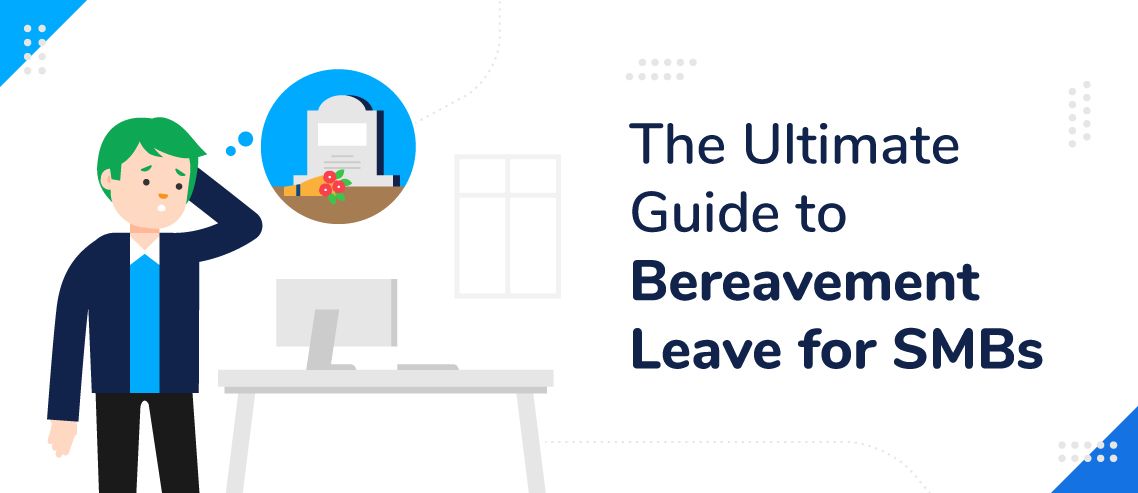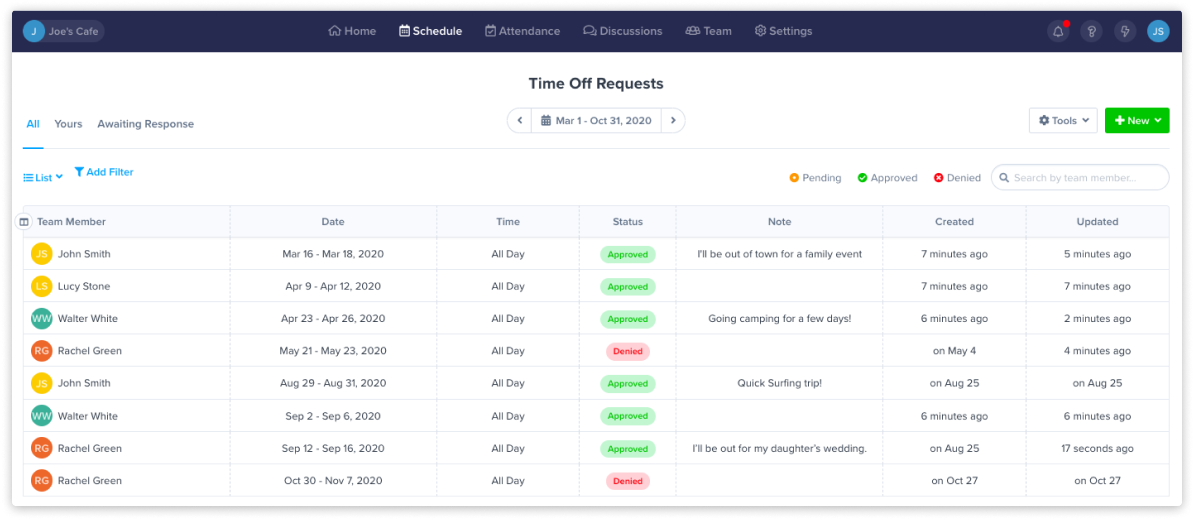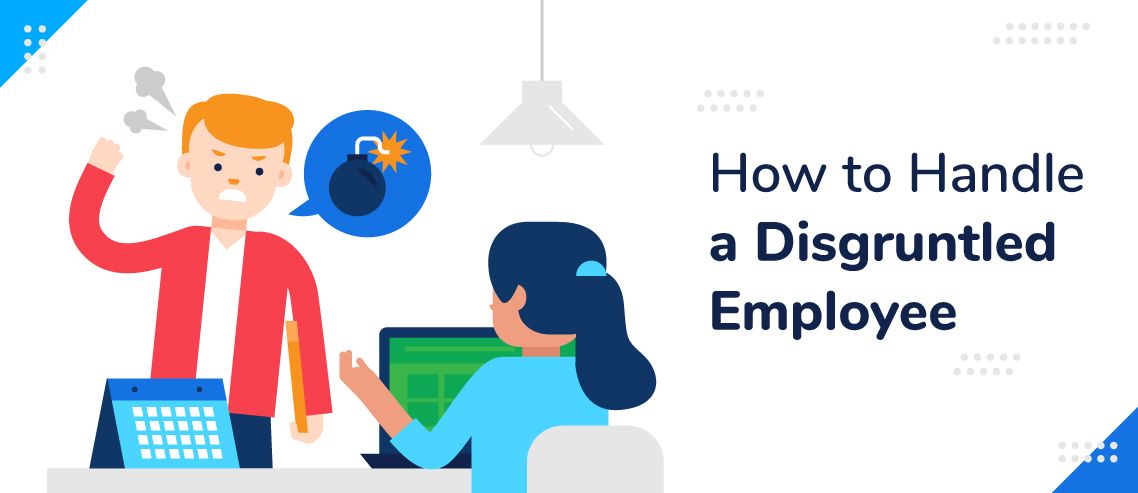The Ultimate Guide to Bereavement Leave for SMBs

In the United States, small businesses alone employ nearly sixty million people. That’s roughly the size of Italy.
Needless to say, small and medium-sized businesses (SMBs) are the backbone of our economy and represent nearly a quarter of the country’s workforce.
The CDC also reports that an average of nearly 8,000 people die every day in the US.
The loss of a loved one comes with profound heartache and consequences. The grieving process alone can be earth-shattering, but when you factor in details like notifying family, funeral arrangements, and the reading of the will, it can get downright exhausting.
Naturally, your employees will need time to make such arrangements. Hopefully, they’ll take a little time to heal as well. If you don’t have a bereavement leave policy on file for your SMB, then read on, because we’ll help you build one:
What Is Bereavement Leave?
Bereavement leave is when an employee takes time off after the death of a loved one. Typically, it’s a close relative, but that’s not always the case.
Many companies offer paid bereavement leave to their employees for an average of three full days so they can plan and attend the funeral and have some time for reflection. Many companies will also offer additional leave, but it’s unpaid.
The death of a loved one impacts everyone differently. It’s far from a linear path, and often includes a wide range of emotions, including anxiety, loneliness, shock, anger, guilt, and numbness. Grief affects you on a social and professional level, which is why taking time away from the pressure of work is an important part of the healing process.
Is Bereavement Leave Required by Federal or State Law?
Unfortunately, it’s not required by any federal law, making it up to employers to choose to provide it or not. The Fair Labor Standards Act (FLSA) does not require payment for time not worked, including attending a funeral. This type of benefit is generally a matter of agreement between an employer and an employee (or the employee’s representative).
However, some states, like Oregon, do offer bereavement leave if employees meet a specific set of criteria. However, it is not required that it’s paid bereavement leave. Just guaranteed time off without penalty.
California also legally requires paid bereavement leave for some of its public-sector employees and state employees.

Creating Your Own Bereavement Policy
Naturally, you’ll want to adhere to any relevant laws in your state, but that doesn’t mean you can’t go above and beyond. Creating a bereavement policy is far from rocket science, but there are some intricacies you’ll want to get right to avoid any unnecessary confusion.
Step 1: Decide if It’s Paid or Unpaid
If your small business has the means to offer paid bereavement leave, it’s definitely worth considering. The last thing someone wants to worry about when they’re grieving the loss of a loved one and making funeral arrangements is whether they can afford to take time off.
If you need to be a bit more selective with your benefits, then it’s a good idea to define exactly which employees receive bereavement leave. Most companies provide it to full-time employees, but it’s rare that interns, contractors, or part-time employees are eligible.
It’s also good to define when bereavement leave eligibility starts. If it kicks in ninety days or one year after starting, that should be explicitly stated in the employee handbook.
Step 2: Get Specific to Avoid Any Gray Areas
Next up, be sure to define who’s covered under bereavement leave. Oftentimes, it’s only immediate family only such as children, parents, brothers, sisters, and spouse. Some companies extend bereavement leave further to include cousins, grandparents, aunts, and uncles.
Beyond defining people, you’ll want to decide exactly how long bereavement leave lasts. Sure, three days is the standard, but can they extend it with an unpaid portion? Or could they use accrued paid time off (PTO) days as means of extension?
Step 3: Outline the Notification Process
Like any form of time off, it’s good to outline exactly how your staff requests bereavement time. Sure, death in the family can happen unexpectedly, so there should be some leniency, but it’s better to require some form of notification or communication, so the company has time to cover shifts.
It’s also good to decide upfront if you’ll require proof of loss, such as a death certificate or pamphlet from the funeral service. Many companies choose not to require such a distraction but often include it in the policy anyway, just in case an employee uses bereavement leave excessively.
Finally, share the policy in your employee handbook, store it in your company shared drive, and review it each year to ensure it’s up to date.
Bereavement & Time-off Tracking Software
The right software will make it easy to track all time off, including bereavement leave. ZoomShift has built-in time tracking capabilities that ensure all time off, including bereavement leave, is properly requested, and that necessary shifts are covered.
It’ll provide a nifty calendar view, so everyone knows who’s out of the office and for how long. It also makes it easy to make sure your employees get paid for bereavement leave if that’s part of your policy.

Wrapping Up
The grieving process is different for everyone, so there’s no way of telling whether bereavement time will be enough to feel fully ready to get back to work.
The Society for Human Resource Management (SHRM) found that 78% of companies also offer employee assistance programs that provide workers with resources that help them get through difficult times.
Some common resources include confidential assessments, referrals, follow-up services, and short-term counseling. People are your greatest asset, so sometimes a little compassion and empathy can boost morale, boost job satisfaction, and increase employee retention, which is all part of the recipe for success.
What’s your company’s policy on bereavement leave? Share it in the comments below:
JD enjoys teaching people how to use ZoomShift to save time spent on scheduling. He’s curious, likes learning new things everyday and playing the guitar (although it’s a work in progress).



